

Ed and Periodic Videos. What really happens to the plastic you throw away - Emma Bryce. If you watched this video, you’re probably interested in how plastics are made, and what impact they have on the environment.
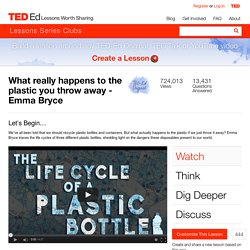
For starters, you might want to watch this video that shows you how plastic bottles are produced. The American Chemistry Council also has some helpful guidelines on how the material is manufactured, what different types there are, and what role monomers and polymers play in the manufacturing process. (What are monomers and polymers anyway? You can read more about how they’re used in plastics, here.) Moving on from the molecular stuff, plastic also has more visible impacts on the earth. Talking of hazards, plastic in the ocean is one of the greatest hazards of all. But there’s hope: plastics can be recycled, after all.
What are those floaty things in your eye? - Michael Mauser. Proof of Evolution That You Can Find on Your Body. Let's use video to reinvent education - Salman Khan. With a library of over 4,000 videos on everything from arithmetic to physics, finance, and history and hundreds of skills to practice, the Khan Academy is on a mission to help people learn what they want, when they want, at their own pace.Sir Ken Robinson makes an entertaining and profoundly moving case for creating an education system that nurtures (rather than undermines) creativity in his 2006 TED Talk.Listen to the story on NPR about the YouTube Phenomenon, as it celebrated its five-year anniversary in 2010.
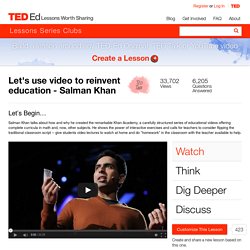
Robert Siegel talks to Alex Pham, technology journalist for the Los Angeles Times, about its effect on the online world.In 2011, the World Bank launched a new Education Sector Strategy 2020, “Learning for All.” Biodiesel: The afterlife of oil - Natascia Radice. A guide to the energy of the Earth - Joshua M. Sneideman. Energy Literacy: Essential Principles and Fundamental Concepts for Energy Education Want to know more about the seven Energy Principles?
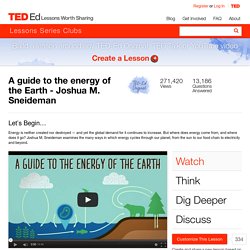
Download the framework today or order it for your educators, school or organization. The Complicated Journey of Marine Plastic Pollution. The aim of this project is to raise awareness of the increasingly dire issue of marine plastic pollution and encourage people to participate in solutions.Find out more about the Tara Ocean Expeditions featured in the film.
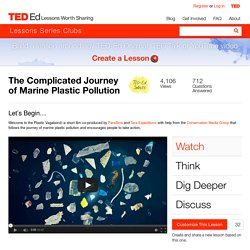
For a comprehensive report on The New Plastic Economy check out this recent report from the Ellen MacArthur Foundation. Read more about the Plastisphere--an entirely new ecosystem forming in the ocean due to the massive amounts of plastic trash. Check out Life in the “Plastisphere”: Microbial Communities on Plastic Marine Debris. Interested in entrepreneurial solutions to the problem of plastic pollution. Check out Think Beyond Plastic. How do solar panels work? - Richard Komp. Would you like some more resources on solar energy?
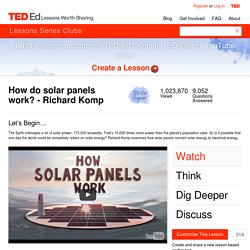
Visit this site with links to other places where solar cells and their use are discussed including the MAINE SUN, Quarterly newsletter of the Maine Solar Energy Association. Another place for resources includes: The American Solar Energy Society Website, which has the Solar Today magazine and many links and publications. Find out more about Skyheat, its history and goal. For two essential books on the topic, check out the educator’s texts: Practical Photovoltaics and THE SOLAR ELECTRIC HOME.
Joel Davidson & Richard Komp. aatec Publications, Ann Arbor, Michigan, 1983. Want to test your knowledge about solar energy? How I teach kids to love science - Cesar Harada. Love the idea of citizen science?
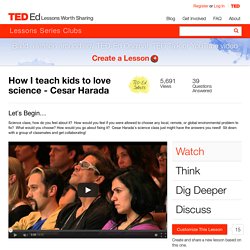
Visit Zooniverse to find out how you can help. There is something out there just waiting for you to discover! The Earth is full - Paul Gilding. Paul Gilding has spent 35 years trying to change the world, doing everything he can think off.
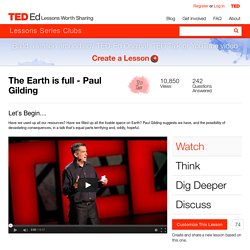
He’s served in the Australian military, chased nuclear armed aircraft carriers in small inflatable boats, plugged up industrial waste discharge pipes, been global CEO of Greenpeace, taught at Cambridge University, owned and run two ground-breaking sustainability focused companies and been a close confidant and advisor to the CEOs of some the world’s largest companies. More about Paul on his website.You really do have to wonder whether a few years from now we’ll look back at the first decade of the 21st century — when food prices spiked, energy prices soared, world population surged, tornados plowed through cities, floods and droughts set records, populations were displaced and governments were threatened by the confluence of it all — and ask ourselves: What were we thinking?
Why are there so many insects? - Murry Gans. As successful as insects are, they evolved to live on land – not in the oceans.
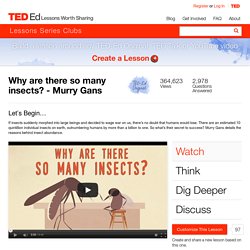
This gives us another way to see just how many insects there are on earth, so grab a scientific calculator. (If you need any help ask a math or science teacher - you will make their day!) Here’s a question for you: The total land area of Earth is approximately 149 million square kilometers (1.49 x 108 km2). If there are 10 quintillion insects on our planet, on average how many could be found in a 1 meter by 1 meter box? Here is a little help for those of you not very familiar with the metric system.
5 Weird Involuntary Reflexes Explained! 5 Weird Involuntary Reflexes Explained!